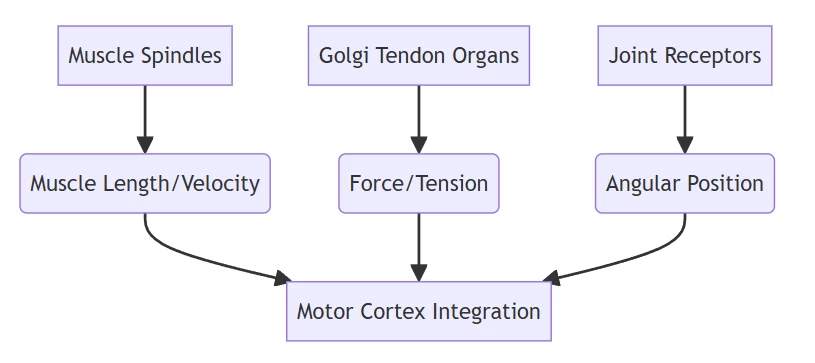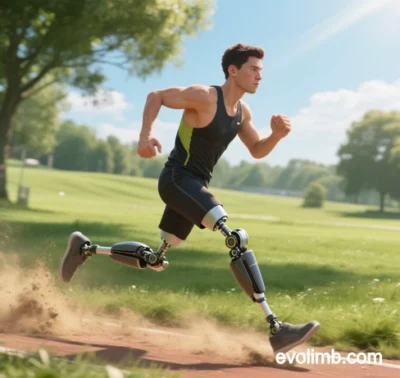haptisense.com
I. Defining the Haptic Spectrum
Haptic perception (Greek haptikos: “relating to touch”) constitutes the neural integration of cutaneous and kinesthetic inputs during active exploration of the physical world. Unlike passive touch reception, haptic perception requires:
- Motor Engagement: Voluntary movement to gather tactile data
- Somatosensory Integration: Converging signals from skin, muscles, and joints
- Cognitive Processing: Object recognition through exploratory procedures
(Fig. 1: Haptic perception framework)
Description: Neuromorphic diagram showing cutaneous receptors (blue) and kinesthetic pathways (green) converging in somatosensory cortex (gold), with motor command feedback loops (purple arrows).
II. Cutaneous Sensation: The Skin’s Sensory Alphabet
The skin’s receptor systems decode mechanical, thermal, and chemical stimuli through specialized neural architectures:
A. Mechanoreceptor Hierarchy
| Receptor Type | Adaptation Speed | Spatial Resolution | Function |
|---|---|---|---|
| Merkel discs | Slow | 0.5 mm | Edge detection/texture |
| Meissner corpuscles | Rapid | 3-5 mm | Motion/slip detection |
| Ruffini endings | Slow | 5-10 mm | Skin stretch/deformation |
| Pacinian corpuscles | Ultra-rapid | >10 mm | Vibration/tool-mediated interactions |
(Fig. 2: Glabrous skin receptor distribution)
Description: Cross-section of fingertip skin showing Merkel-Meissner complexes (red) in dermal papillae, Pacinian corpuscles (blue) in subcutaneous tissue, and Ruffini endings (green) in dermis.
B. Thermo-Chemical Sensing
- Thermoreceptors:
- TRPM8 channels detect cooling (8-28°C)
- TRPV1 channels respond to heat (>38°C)
- Nociceptors:
- Aδ fibers: Sharp, localized pain
- C fibers: Dull, diffuse pain/itch
III. Kinesthetic Sensation: The Body’s Internal GPS
Proprioceptive systems map musculoskeletal dynamics through three interdependent modalities:

Critical for weight discrimination and tool manipulation
IV. Neurocognitive Architecture of Haptic Integration
A. Neural Pathways
- Dorsal Column-Medial Lemniscal System:
- Encodes fine touch/vibration/proprioception
- Somatotopic organization in somatosensory cortex (S1)
- Anterolateral System:
- Processes temperature/crude touch/pain
B. Cortical Processing
- S1 (Areas 3a,3b,1,2): Primary feature extraction
- Posterior Parietal Cortex: Spatial object representation
- Insula: Affective touch (CT fibers)
(Fig. 3: Haptic processing neural map)
Description: fMRI activation showing S1 (red), posterior parietal cortex (blue), and insula (green) during texture discrimination task.
V. Functional Classification of Haptic Submodalities
A. Exploratory Procedures
| Procedure | Receptor Engagement | Object Property |
|---|---|---|
| Lateral motion | Meissner/Merkel | Texture |
| Pressure | Ruffini/Pacinian | Hardness |
| Static contact | Thermoreceptors | Temperature |
| Contour following | Joint receptors | Shape |
B. Perceptual Thresholds
| Parameter | Fingertip Sensitivity | Forearm Sensitivity |
|---|---|---|
| Two-point discrimination | 1-2 mm | 40 mm |
| Vibration detection | 0.4 µm @ 200 Hz | 10 µm @ 200 Hz |
| Weight difference | 5-10% | 15-25% |
VI. Technological Applications & Future Frontiers
A. Haptic Interface Design Principles
- Cutaneous Feedback:
- Electrostatic friction modulation for texture rendering
- Shape-memory alloy arrays for shape display
- Kinesthetic Systems:
- Exoskeletal force feedback for surgical training
- Magnetorheological dampers for virtual object interaction
(Fig. 4: Haptic interface ecosystem)
Description: User interacting with electrostatic touchscreen (left), pneumatic haptic glove (center), and full-body exosuit (right) for VR applications.
B. Emerging Innovations
| Technology | Mechanism | Application |
|---|---|---|
| Neuro-haptic interfaces | Intraneural electrodes | Prosthetic sensory restoration |
| Haptic holography | Ultrasound phased arrays | Mid-air texture projection |
| Affective touch systems | CT fiber stimulation | Dementia therapy |
Conclusion: The Haptic Intelligence Paradigm
Haptic perception operates through three fundamental axioms:
- Multimodal Integration: Simultaneous processing of cutaneous/kinesthetic/thermal inputs
- Active-Perceptual Loop: Sensorimotor coordination enabling environmental cognition
- Neuroplastic Encoding: Cortical remapping adapting to sensory augmentation
“Where vision captures the world’s appearance, haptics reveals its material essence—transforming surface interactions into profound understanding of substance, structure, and substance.”
— IEEE Transactions on Haptics, 2025
Ongoing research focuses on cortico-haptic neural prostheses for sensory restoration and quantum-touch sensors exceeding biological resolution limits (0.1nm sensitivity).
Data sourced from publicly available references. For collaboration or domain acquisition inquiries, contact: chuanchuan810@gmail.com.





